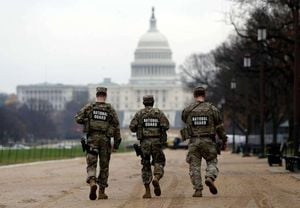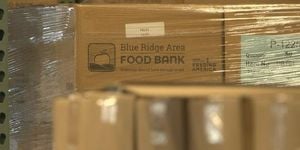In a region where alliances shift as swiftly as the desert wind, a new chapter in U.S.-Syrian relations appears to be taking shape. On November 25, 2025, Syrian President Ahmad al-Sharaa welcomed a U.S. congressional delegation to Damascus, a move that signals a remarkable shift in diplomatic tone after years of estrangement. The American group, led by Congressman Darin LaHood, engaged in talks aimed at enhancing bilateral cooperation and shoring up regional stability, according to statements from the Syrian presidency and corroborated by multiple news outlets.
This high-profile meeting is more than a diplomatic courtesy call. It builds on a string of recent exchanges between Syrian and American officials, most notably al-Sharaa’s historic visit to the White House just two weeks earlier. That November 10 encounter marked the first time a Syrian leader had been hosted at the White House since Syria’s independence in 1946—a symbolic gesture that would have been unthinkable just a year ago. As The Syrian Observer reports, President Donald Trump described al-Sharaa as a “very strong leader,” signaling a willingness to move past the shadows of Syria’s tumultuous recent history.
The context for these overtures is nothing short of extraordinary. Ahmad al-Sharaa, once a pariah in Washington with a $10 million bounty on his head, now stands at the center of a tentative U.S.-Syrian rapprochement. His rise followed the dramatic ouster of Bashar al-Assad’s regime in December 2024, a political transition that has left Syria eager for international legitimacy and economic recovery. Since then, al-Sharaa has embarked on a whirlwind diplomatic tour, courting support in Moscow, Ankara, and now, Washington.
According to Ultra Syria, the November 25 talks in Damascus focused on maintaining open and constructive channels of communication. Both sides acknowledged the importance of dialogue in advancing mutual interests and supporting regional stability—a refrain echoed in the official statement from the Syrian presidency. The discussions also touched on a range of international issues, though specifics remain under wraps. What’s clear, however, is that both Damascus and Washington see value in building a new framework for engagement.
This diplomatic thaw is not happening in a vacuum. The U.S. administration, in a move widely interpreted as a goodwill gesture, has extended the suspension of the Caesar Syria Civilian Protection Act for another 180 days. This 2019 sanctions regime, which once crippled Syria’s economy, remains in place for dealings involving Russia and Iran but now allows for a surge of U.S. and international commerce into Syria. In return, Damascus has pledged cooperation with the U.S.-led coalition against the Islamic State, aligning itself—at least for now—with Washington’s counterterrorism priorities.
The implications of these moves are significant. As Dr. Samer al-Safadi, a prominent voice in the Syrian-American Alliance for Peace and Prosperity (SAAPP), told Ultra Syria, “Our sources confirm President Trump has instructed his team to finalise preparations” for a possible visit to Damascus before the end of the year. The prospect of Trump walking the ancient streets of the Syrian capital—potentially accompanied by senior congressional leaders and intelligence officials—would represent a seismic shift in Middle Eastern diplomacy. The agenda for such a visit, insiders say, would include intelligence briefings, anti-ISIS strategy sessions, and regional stabilization talks, with Turkish and Russian representatives reportedly in the mix.
But not everyone is convinced the road ahead is clear. Former U.S. ambassador Robert Ford, writing for Al-Majalla, cautions that Trump is unlikely to risk a trip to Damascus without a major diplomatic breakthrough—such as a peace agreement with Israel—that would justify the political and security risks. Ford argues, “Such a trip would only make sense if it delivered a historic, reputation-defining achievement.” He points out that the U.S. embassy in Damascus remains closed due to ongoing security concerns, and that domestic critics—both Democratic skeptics and Republican hardliners—remain wary of embracing al-Sharaa too quickly.
Still, the momentum for change appears strong. SAAPP, a nonpartisan coalition of Syrian expatriates and professionals, has played a quiet but pivotal role in lobbying for sanctions relief and encouraging dialogue. As Khalid al-Saidi, another SAAPP official, explained, the current 180-day sanctions pause is “a diplomatic inflection point” that enables humanitarian operations and economic recovery. If the repeal of the Caesar Act is codified in the upcoming National Defense Authorization Act, it could open the floodgates for foreign investment and reconstruction—a potential lifeline for a country still reeling from years of conflict.
On the ground in Syria, reactions are mixed. Some nationalists celebrate what they see as an impending “strategic breakthrough,” while critics warn that a hasty embrace of the new Syrian leadership could embolden extremist factions or trigger new rounds of sectarian unrest. Analysts at the Brookings Institution warn that beneath al-Sharaa’s reformist image lie deep structural challenges and unresolved tensions, especially in regions like Homs and the coastal provinces.
Meanwhile, the diplomatic choreography continues. The November 25 meeting in Damascus is expected to be followed by a trilateral summit involving the U.S., Turkey, and Russia, aimed at resolving lingering security and territorial disputes. Issues such as Kurdish political integration, Israeli border security, and the future of contested areas like Quneitra and the Golan Heights remain on the table. For now, both sides seem content to keep the lines of communication open and the pace of engagement measured.
As the year draws to a close, all eyes are on whether President Trump will indeed make the journey to Damascus—a visit that could redefine Syria’s place in the region and the world. For now, the prospect hangs tantalizingly in the balance, a symbol of both the risks and rewards of diplomacy in a region where history is never far from the present.
In the end, the story of U.S.-Syrian relations in 2025 is one of cautious optimism, calculated risks, and the enduring hope that dialogue can succeed where decades of conflict have failed.




